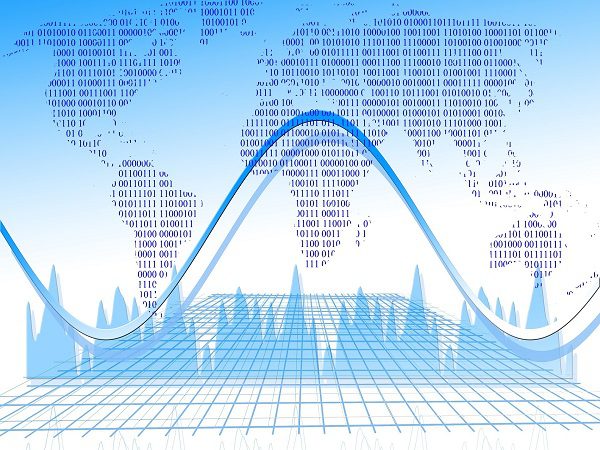Introduction
In the fast-paced world of technology, the term “big data analytics” has become increasingly prevalent. This powerful tool has revolutionized the way businesses operate, make decisions, and gain valuable insights. For beginners looking to understand and harness the power of big data analytics, this comprehensive guide will provide an in-depth overview, exploring its significance, key concepts, and practical applications.
Understanding Big Data Analytics
Big data analytics refers to the process of examining large and complex data sets to uncover hidden patterns, correlations, and valuable insights. In today’s digital age, where data is generated at an unprecedented rate, organizations across various industries find it imperative to harness the potential of big data analytics.
Moreover, the significance of big data analytics lies in its ability to transform raw data into actionable insights, helping businesses make informed decisions. By identifying trends and predicting future outcomes, organizations can gain a competitive edge in the market.
Significance of Big Data Analytics
The significance of big data analytics lies in its ability to transform raw data into actionable insights, helping businesses make informed decisions. It enables organizations to identify trends, predict future outcomes, and gain a competitive edge in the market. From healthcare to finance, and from marketing to manufacturing, the applications of big data analytics are diverse and far-reaching.
Key Concepts in Big Data Analytics
Before diving into the applications, it’s essential to grasp the key concepts that form the foundation of big data analytics. The three V’s – Volume, Velocity, and Variety – represent the core characteristics of big data. Volume refers to the sheer amount of data, Velocity is the speed at which data is generated, and Variety encompasses the different types of data, including structured, unstructured, and semi-structured.
Another crucial concept is the data processing framework, which includes batch processing and real-time processing. Batch processing involves analyzing data at scheduled intervals, while real-time processing allows for instant analysis and decision-making.
Practical Applications of Big Data Analytics
Big data analytics finds application in various industries, each reaping the benefits in its unique way. Additionally, this versatile tool is instrumental in transforming how businesses operate and make decisions.
In the healthcare sector, big data analytics is paramount for optimizing patient care, predicting diseases, and personalizing treatments. Moreover, financial institutions leverage this technology for fraud detection, risk management, and customer relationship management, thereby enhancing their operational efficiency.
Healthcare:
In the healthcare sector, big data analytics is utilized for patient care optimization, disease prediction, and treatment personalization. It helps in identifying patterns in patient data, enabling healthcare providers to deliver more effective and personalized treatments.
Finance:
Financial institutions leverage big data analytics for fraud detection, risk management, and customer relationship management. By analyzing large volumes of financial data, institutions can identify unusual patterns and prevent fraudulent activities.
Marketing:
In the realm of marketing, big data analytics is a game-changer. It allows marketers to understand consumer behavior, preferences, and trends. This insight enables targeted marketing campaigns, personalized promotions, and improved customer engagement.
Manufacturing:
Big data analytics plays a crucial role in optimizing manufacturing processes. By analyzing data from sensors and production lines, manufacturers can enhance efficiency, reduce downtime, and improve overall operational performance.
Getting Started with Big Data Analytics
For beginners eager to embark on their journey into big data analytics, a step-by-step approach is essential.
Learn the Basics:
Start by understanding the fundamental concepts of big data analytics, including the three V’s and the data processing frameworks. Familiarize yourself with common terms and technologies such as Hadoop, Spark, and NoSQL databases.
Acquire Technical Skills:
Develop proficiency in programming languages like Python or R, which are widely used in big data analytics. Additionally, gaining hands-on experience with relevant tools and platforms is crucial for a comprehensive understanding. Furthermore, exploring data visualization techniques using tools like Tableau or Power BI enhances the ability to communicate insights effectively.
Transitioning from theoretical knowledge to practical application is key in mastering big data analytics. Once you’ve acquired proficiency in programming languages, it’s imperative to gain hands-on experience with tools and platforms to solidify your skills. Moreover, delving into data visualization techniques using tools like Tableau or Power BI not only refines your abilities but also enables you to convey complex insights in a visually compelling manner.
Explore Educational Resources:
There are numerous online courses, tutorials, and certifications dedicated to big data analytics. Platforms like Coursera, edX, and Udacity offer courses from renowned institutions and industry experts.
Apply Knowledge through Projects:
Practical experience is crucial in mastering big data analytics. Work on real-world projects, analyze datasets, and apply the concepts you’ve learned. This hands-on experience will enhance your skills and build a strong foundation.
Stay Updated:
The field of big data analytics is dynamic, with new technologies and trends emerging regularly. Stay updated on the latest developments by following industry blogs, attending webinars, and participating in relevant forums and communities.
Transitions in Big Data Analytics
Understanding the transitions between key concepts and practical applications is vital for a holistic grasp of big data analytics. Transitioning from theory to practice involves applying knowledge gained from learning the basics to real-world scenarios.
Conclusion
Unleashing the power of big data analytics is an exciting journey for beginners. By understanding its significance, key concepts, and practical applications, individuals can harness its potential to drive innovation and make informed decisions. As technology continues to evolve, embracing big data analytics is not just a choice but a necessity for businesses and professionals seeking to thrive in the data-driven era. So, embark on this transformative journey, acquire the necessary skills, and unlock the endless possibilities that big data analytics has to offer.

































